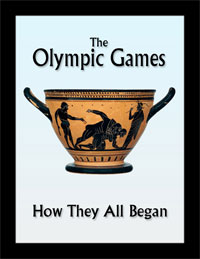
The names of the Gods Heracles and Hauronas inscribed on the sling bullet. Courtesy Dafna Gazit, IAA.
“Victory of Heracles and Hauronas” reads the Greek inscription from a 2,200-year-old sling bullet. Contrary to what you might expect, however, the bullet was found not in Greece, but in Israel. The object was uncovered during the ongoing excavations at Tel Yavne by the Israel Antiquities Authority (IAA), and dates to a time when the town of Yavne was a firm ally of the Seleucids in the early years of the Hellenistic period (c. 332–37 BCE).

A Threatening Inscription
“Lead sling bullets are known in the ancient world beginning in the fifth century BCE, but in Israel few individual sling bullets were found with inscriptions,” said Yulia Ustinova of Ben Gurion University. The inscription written on the sling bullet, which measures about 2 inches long, would have served to taunt the enemy, raise the user’s morale, and possibly endow it with the favor of the gods whose names are inscribed upon it, Heracles and Hauron.
“The pair of gods, Hauron and Heracles, were considered the divine patrons of Yavne during the Hellenistic period,” said Ustinova, who translated the inscription. “The inscription on a sling bullet is the first archaeological evidence of the two guardians of Yavne, discovered inside Yavne itself. Until today, the pair was only known from an inscription on the Greek island of Delos.”
During Seleucid control of the region, Yavne, which is located along Israel’s southern coast, between Tel Aviv and Ashdod, was a fully Hellenized city. There is no way to know who used the sling bullet or against whom it may have been thrown. However, Pablo Betzer and Daniel Varga, directors of the excavation, suggest that “it is not impossible that it is related to the conflict between the Greeks and the Hasmoneans,” which is remembered in the celebration of Hanukkah.
Yavne’s Massive Excavation
The excavation at Yavne is one of the largest ever conducted by the IAA, with many incredible finds having previously been announced, including the largest wine factory ever discovered from the Byzantine period (c. fourth–seventh centuries CE), tombs from the time of the Jewish Sanhedrin, a trove of gold coins, and more. Plans are already in the works for the site to be turned into an archaeological park. Before that happens, however, archaeologists fully expect more remarkable finds. According to IAA Director-General Eli Eskozido, “We are sure that Yavne has not yet had the last say.”
Read more in BHD:
Members, read more in the BAS Library:
Modi’in: Hometown of the Maccabees
Not a BAS Library or All-Access Member yet? Join today.The post Sling Bullet with Greek Inscription Discovered in Israel appeared first on Biblical Archaeology Society.




0 Commentaires